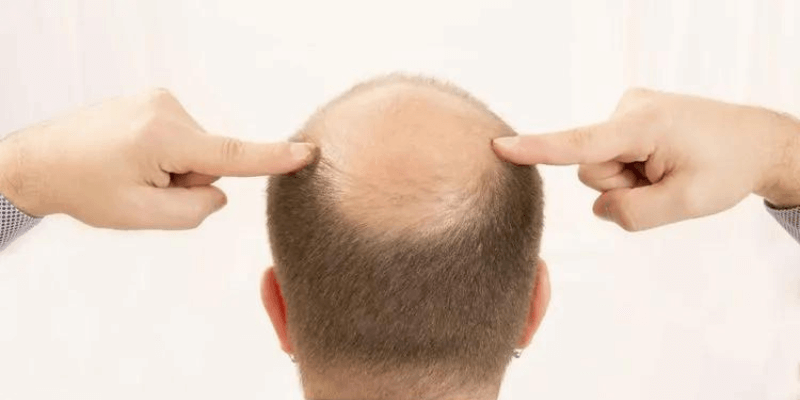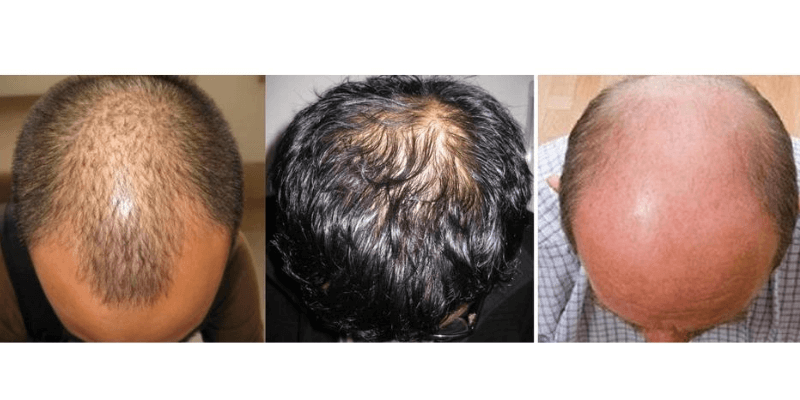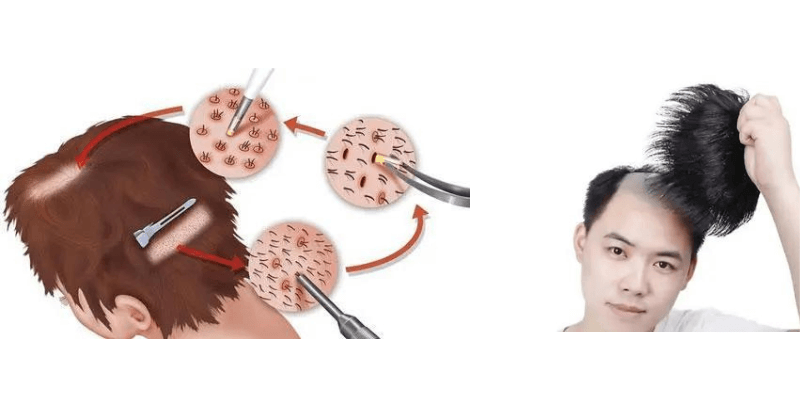
Hair loss is a widespread issue affecting millions globally, causing distress and a significant impact on self-esteem. With a myriad of underlying causes, understanding hair loss and discovering effective strategies for prevention and growth can be life-changing. This comprehensive guide delves into the science behind hair loss, practical tips for hair growth, and products that can aid in achieving healthy, robust hair.
What Causes Hair Loss?
- Genetics (Androgenetic Alopecia)
- Androgenetic alopecia, or male/female pattern baldness, is the most common cause of hair loss. It’s hereditary and linked to dihydrotestosterone (DHT), a derivative of testosterone that shrinks hair follicles over time.
- Hormonal Changes
- Hormonal imbalances due to pregnancy, childbirth, menopause, or thyroid problems can trigger temporary or permanent hair loss.
- Medical Conditions
- Conditions like alopecia areata, scalp infections, and trichotillomania (hair-pulling disorder) directly affect hair health. Additionally, illnesses such as diabetes and lupus can also contribute to hair loss.
- Medications and Treatments
- Certain drugs used for cancer, arthritis, depression, heart problems, and high blood pressure may have side effects that include hair loss.
- Physical and Emotional Stress
- Stress, whether physical (e.g., surgery, illness) or emotional, can lead to telogen effluvium, a condition where hair prematurely enters the shedding phase.
- Nutritional Deficiencies
- Deficiencies in vitamins and minerals like iron, zinc, vitamin D, and biotin can weaken hair and lead to shedding.
- Hairstyling and Treatments
- Frequent use of chemical treatments, heat styling, and tight hairstyles can damage hair follicles and lead to hair loss.
How to Grow Hair Faster
- Healthy Diet
- Consuming a balanced diet rich in vitamins, minerals, and proteins is crucial. Foods high in vitamins A, C, D, and E, zinc, iron, and omega-3 fatty acids support hair health.
- Supplements
- Taking supplements, especially those containing biotin, can promote hair growth. Consult a healthcare provider before starting any supplement regimen.
- Scalp Care
- Keeping the scalp clean and well-moisturized helps maintain healthy follicles. Regular scalp massages increase blood circulation, stimulating hair growth.
- Minimize Stress
- Incorporating stress-relief practices like yoga, meditation, and regular exercise can reduce stress-induced hair loss.
- Avoid Harsh Treatments
- Limit the use of harsh chemical treatments and heat styling. Opt for natural, gentle hair care products.
- Proper Hair Care Routine
- Use shampoos and conditioners suited to your hair type. Avoid over-washing, and gently dry your hair to prevent breakage.
Products for Hair Growth
- Topical Treatments
- Minoxidil: This over-the-counter medication is applied to the scalp to stimulate hair growth and slow hair loss.
- Prescription Medications
- Finasteride: Primarily for men, this oral medication reduces DHT levels, slowing hair loss and promoting regrowth.
- Natural Oils
- Essential oils like rosemary, peppermint, and castor oil are known for their hair growth properties.
- Hair Growth Shampoos and Conditioners
- Products containing ingredients like keratin, biotin, and niacin can strengthen hair and support growth.
- Laser Therapy
- Low-level laser therapy (LLLT) devices can stimulate hair follicles and promote hair growth.
- Hair Supplements
- Formulated with vitamins and minerals, hair supplements can fill nutritional gaps that affect hair health.
Reducing Hair Loss
- Gentle Handling
- Be gentle when brushing and washing hair. Avoid excessive pulling and use a wide-toothed comb to detangle.
- Protective Hairstyles
- Opt for loose hairstyles that don’t put stress on the hair follicles. Avoid tight braids, ponytails, and buns.
- Regular Trims
- Regular trims help prevent split ends and breakage, promoting healthier growth.
- Healthy Lifestyle
- Maintain a healthy lifestyle with a balanced diet, regular exercise, and adequate sleep to support overall well-being and hair health.
- Avoid Smoking and Limit Alcohol
- Smoking restricts blood flow to the scalp, while excessive alcohol can lead to dehydration and nutritional deficiencies affecting hair health.
Strengthening Hair
- Protein Treatments
- Regular protein treatments can help strengthen hair and reduce breakage.
- Hydration
- Keep hair hydrated with deep conditioning treatments and leave-in conditioners.
- Avoid Over-Washing
- Washing hair too frequently can strip natural oils. Find a balance that keeps hair clean but not dry.
- Heat Protection
- Use heat protectant sprays before styling to minimize heat damage.
- Healthy Hair Care Products
- Choose shampoos and conditioners free of sulfates, parabens, and other harsh chemicals.
Conclusion
Understanding the various factors contributing to hair loss is the first step in addressing the issue. By adopting a holistic approach that includes a healthy diet, proper hair care routines, and the use of beneficial products, individuals can combat hair loss and promote healthier, stronger hair. Incorporate these strategies into your daily life to not only slow down hair loss but also foster an environment conducive to hair growth. Remember, patience and consistency are key to seeing long-term results in hair health.
Effective Solutions for Severe or Localized Hair Loss: Restoring Beauty and Confidence
Dealing with severe or localized hair loss can be distressing, affecting not only one’s appearance but also self-esteem and confidence. Fortunately, advancements in hair restoration and treatment options offer hope. This guide provides practical solutions for those experiencing significant hair loss, helping them regain their beauty and confidence.
Understanding Localized and Severe Hair Loss

Localized hair loss refers to hair thinning or bald patches in specific areas, such as the crown, temples, or front hairline. Severe hair loss can affect larger areas of the scalp or even result in complete baldness. Common causes include:
- Alopecia Areata
- An autoimmune disorder causing patchy hair loss.
- Traction Alopecia
- Hair loss due to tension from hairstyles that pull on the scalp.
- Cicatricial (Scarring) Alopecia
- Hair loss from inflammatory conditions that damage hair follicles.
- Advanced Androgenetic Alopecia
- Progressive hair loss leading to extensive baldness.
Solutions for Severe or Localized Hair Loss
- Hair Transplant Surgery
- FUE (Follicular Unit Extraction)
- Individual hair follicles are extracted from the donor area and transplanted to the balding regions. This method leaves minimal scarring and has a natural-looking result.
- FUT (Follicular Unit Transplantation)
- A strip of scalp with healthy hair is removed, and individual follicular units are transplanted. This technique is suitable for covering larger bald areas.
- FUE (Follicular Unit Extraction)
- Scalp Micropigmentation (SMP)
- SMP is a non-surgical procedure where tiny pigment deposits are made on the scalp to mimic the appearance of hair follicles. It’s ideal for creating the illusion of fuller hair or a shaved head look.
- Hair Systems and Wigs
- Toupees and Hairpieces
- Custom-made hairpieces that blend seamlessly with natural hair, providing an instant solution for covering bald spots.
- Full Wigs
- High-quality wigs made from natural or synthetic hair offer a complete transformation and are available in various styles and colors.
- Toupees and Hairpieces
Comparing Hair Transplants and Wigs: Advantages and Disadvantages

Hair loss solutions vary widely, with hair transplants and wigs (or hair systems) being two prominent options. Each method has its distinct advantages and disadvantages, catering to different needs and preferences. This comparison aims to help individuals make an informed decision by examining the pros and cons of hair transplants and wigs.
Hair Transplants
Advantages:
- Permanent Solution
- Hair transplants offer a long-lasting solution as the transplanted hair is typically resistant to balding and continues to grow naturally.
- Natural Appearance
- When performed by skilled surgeons, hair transplants provide a natural look, as the hair grows directly from the scalp, blending seamlessly with existing hair.
- Low Maintenance
- After the initial recovery period, transplanted hair requires the same care as natural hair, without the need for special maintenance routines.
- Improved Self-Esteem
- Many individuals experience a boost in confidence and self-esteem, knowing their hair loss has been permanently addressed.
Disadvantages:
- Cost
- Hair transplants can be expensive, with costs varying based on the extent of the procedure and the clinic’s reputation.
- Surgical Risks
- As with any surgery, there are risks such as infection, scarring, and adverse reactions to anesthesia.
- Recovery Time
- The recovery period can take several weeks, during which there may be swelling, discomfort, and temporary shedding of the transplanted hair.
- Not Suitable for Everyone
- Hair transplants may not be effective for those with extensive baldness or certain medical conditions that affect hair growth.
Wigs (Hair Systems)
Advantages:
- Immediate Results
- Wigs provide an instant solution to hair loss, allowing individuals to achieve their desired look without waiting.
- Versatility
- Wigs come in various styles, colors, and lengths, offering the flexibility to change one’s appearance easily.
- Non-Surgical
- Wigs are a non-invasive option, eliminating the risks associated with surgical procedures.
- Affordability
- While high-quality wigs can be costly, they generally have a lower upfront cost compared to hair transplants. There are also budget-friendly options available.
Disadvantages:
- Maintenance
- Wigs require regular care, including cleaning, styling, and proper storage to maintain their appearance and longevity.
- Comfort
- Some wigs can be uncomfortable to wear, especially for extended periods. Issues like itching, heat, and fit can affect daily comfort.
- Durability
- Wigs have a limited lifespan and may need to be replaced periodically, which can add to the overall cost over time.
- Potential for Detection
- Poorly fitted or low-quality wigs may be noticeable, which can affect confidence. High-quality, custom wigs mitigate this issue but at a higher cost.
Conclusion
Choosing between hair transplants and wigs depends on individual preferences, budget, and the extent of hair loss. Hair transplants offer a permanent, natural-looking solution with lower long-term maintenance but come with higher costs and surgical risks. Wigs provide immediate, versatile, and non-invasive solutions, though they require ongoing care and may lack the permanence of transplants. If you have any question about toupee, feel free to contact HairNotion.
CONTACT US: [email protected]
-click here to choose your need Men’s toupee in the stock
-click here to customized your own hair system



